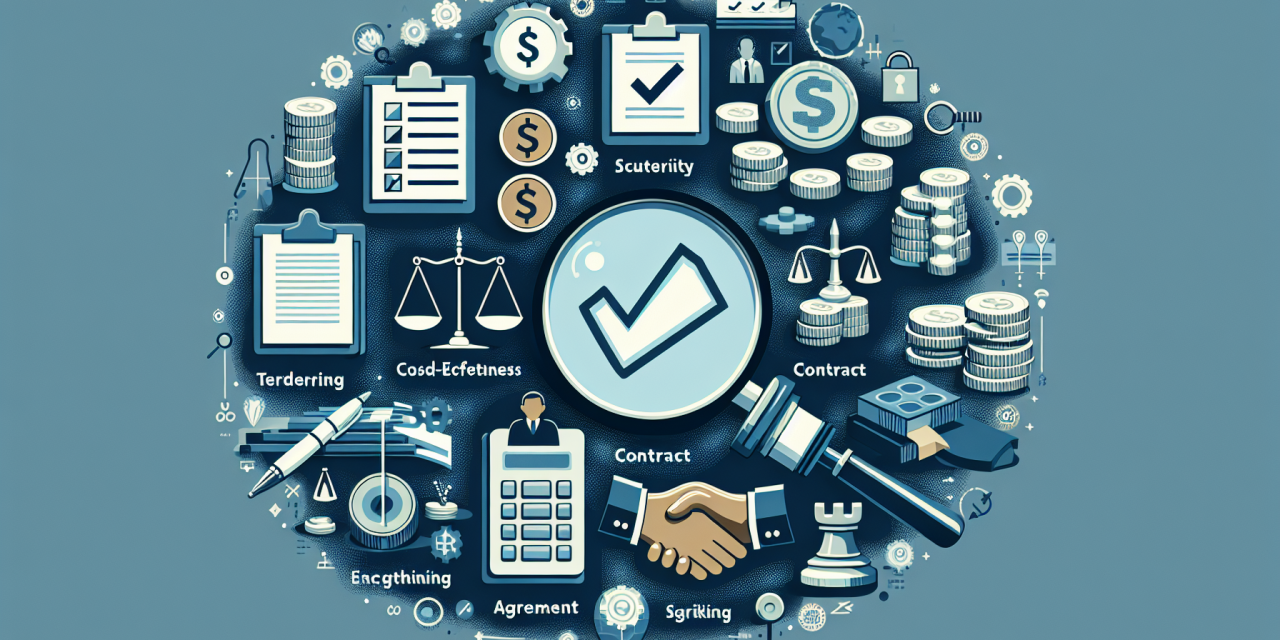Table of Contents
- Introduction
- Understanding Effective Purchasing
- The Tendering Process
- Supplier Selection Criteria
- The Role of Technology in Purchasing and Tendering
- Building Strong Supplier Relationships
- Insights from the Purchasing, Tendering & Supplier Selection Conference
- FAQs
- Conclusion
Introduction
In today’s competitive market, mastering the process of purchasing, tendering, and supplier selection is vital for organizations looking to enhance their efficiency and profitability. A deeper understanding of these processes not only improves relationships with suppliers but also helps in making informed decisions that align with organizational goals. Therefore, attending events like the Purchasing, Tendering & Supplier Selection Conference can provide invaluable insights and networking opportunities for professionals eager to refine their skills.
Understanding Effective Purchasing
Effective purchasing is not merely about acquiring goods or services; it encompasses a strategic approach to managing the supply chain. Organizations must evaluate their purchasing strategies regularly. Good purchasing practices lead to reduced costs, improved quality, and enhanced supplier relationships.
The Importance of Strategic Purchasing
Engaging in strategic purchasing enables firms to obtain the best value. By understanding the market, identifying opportunities for bulk purchasing, and negotiating favorable terms, organizations gain a competitive advantage. The process should start with a thorough assessment of needs and goals.
Evaluating Market Trends
Market dynamics are constantly changing. Therefore, staying updated on trends is crucial. Buyers should focus on understanding price fluctuations, supplier reliability, and potential geopolitical influences that may affect sourcing strategies. Being proactive helps to mitigate risks and seize opportunities.
The Tendering Process
The tendering process acts as a formal method for organizations to receive competitive bids for goods and services. It involves several stages, each demanding careful consideration and planning.
Establishing Clear Specifications
Before issuing a tender, it’s essential to define clear specifications. This step minimizes ambiguities and allows suppliers to submit accurate bids. Ensure that all stakeholders contribute to the specifications to capture all essential requirements.
Advertisement and Communication
The advertisement of the tender should reach a broad audience. Utilizing platforms such as trade journals and specialized websites helps attract quality suppliers. Clear communication throughout the process encourages participation and transparency.
Evaluation of Proposals
Once proposals are received, a structured evaluation process should be implemented. Establishing criteria based on quality, price, and sustainability is paramount. Involving a diverse evaluation committee fosters a balanced assessment.
Supplier Selection Criteria
Selecting the right supplier extends beyond mere price considerations. The decision must account for various factors that impact collaboration and long-term success.
Quality and Reliability
Choosing suppliers based on their quality standards and reliability helps ensure products meet organizational mandates. Examine past performance, customer feedback, and case studies to gauge a supplier’s reputation.
Cost Effectiveness
While price is significant, it is critical to analyze total cost of ownership, which includes evaluating risks, logistics, and potential hidden costs. This holistic approach can reveal better value options.
Scalability and Innovation
Consider the scalability of potential suppliers. As your organization grows, your supplier’s ability to adapt and innovate becomes crucial. Engage in discussions regarding future capabilities, technology advancements, and research initiatives.
The Role of Technology in Purchasing and Tendering
Embracing technology is increasingly vital in modern purchasing and tendering processes. Automation can enhance efficiency, while analytics provide data-driven insights for better decision-making.
Digital Procurement Platforms
Utilizing digital procurement platforms creates streamlined processes. Organizations can manage contracts, track compliance, and evaluate supplier performance more effectively. This ultimately leads to increased transparency and accountability.
Data Analytics
Data analytics tools allow firms to make informed purchasing decisions. By analyzing purchasing patterns and supplier performance metrics, companies can uncover trends and optimize their strategies accordingly.
Building Strong Supplier Relationships
Developing strong relationships with suppliers is essential for long-term success. Collaborating rather than merely transacting creates a partnership based on trust and mutual benefit.
Effective Communication
Maintaining open lines of communication fosters trust. Regular discussions about performance, expectations, and potential issues can prevent many problems. Build connections that allow for transparent feedback and dialogue.
Joint Problem Solving
Encouraging joint problem-solving initiatives cultivates a collaborative atmosphere. When challenges arise, partners working together to resolve them can strengthen their bond and produce innovative solutions.
Insights from the Purchasing, Tendering & Supplier Selection Conference
Participating in the Purchasing, Tendering & Supplier Selection Conference provides a platform for sharing experiences and learning from experts in the field. Here are some insights gained from such conferences:
Networking Opportunities
Conferences bring together purchasing professionals, allowing you to expand your network significantly. Building connections during these events can lead to advantageous partnerships and collaborations.
Industry Best Practices
Attendees learn about industry best practices, helping to shape and refine their purchasing strategies. Workshops and panel discussions frequently cover topics such as negotiation techniques and compliance updates.
Emerging Trends and Future Outlook
Staying abreast of emerging trends is vital. Conferences often highlight anticipated changes in technology, market conditions, and regulatory environments. Understanding these aspects helps organizations prepare for future challenges.
FAQs
What types of suppliers should I consider during selection?
Consider a range of suppliers, including local and international options, large corporations, and small businesses. Each type offers unique benefits, and diversifying your supplier base can enhance stability and innovation.
How can technology improve the tendering process?
Technology streamlines the tendering process by automating communications, managing documents, and analyzing bids efficiently. It increases transparency and reduces errors, allowing for quicker decision-making.
What are the benefits of attending purchasing conferences?
Attending purchasing conferences provides opportunities for professional development, networking, and gaining insights from industry experts. Such events are invaluable for staying updated on best practices and emerging trends.
Conclusion
In conclusion, effective purchasing, tendering, and supplier selection are critical for any organization aiming to thrive in today’s dynamic market. By focusing on strategic purchasing, leveraging technology, and nurturing supplier relationships, organizations can enhance their efficiency and achieve greater success. Therefore, considering avenues such as the Purchasing, Tendering & Supplier Selection Conference is crucial for professionals looking to elevate their expertise. Moreover, embracing continued learning through events and resources will undoubtedly yield long-term advantages in this evolving field. Whether through exploring leadership dynamics or mastering strategic decision-making, there’s always an opportunity to grow and adapt.





